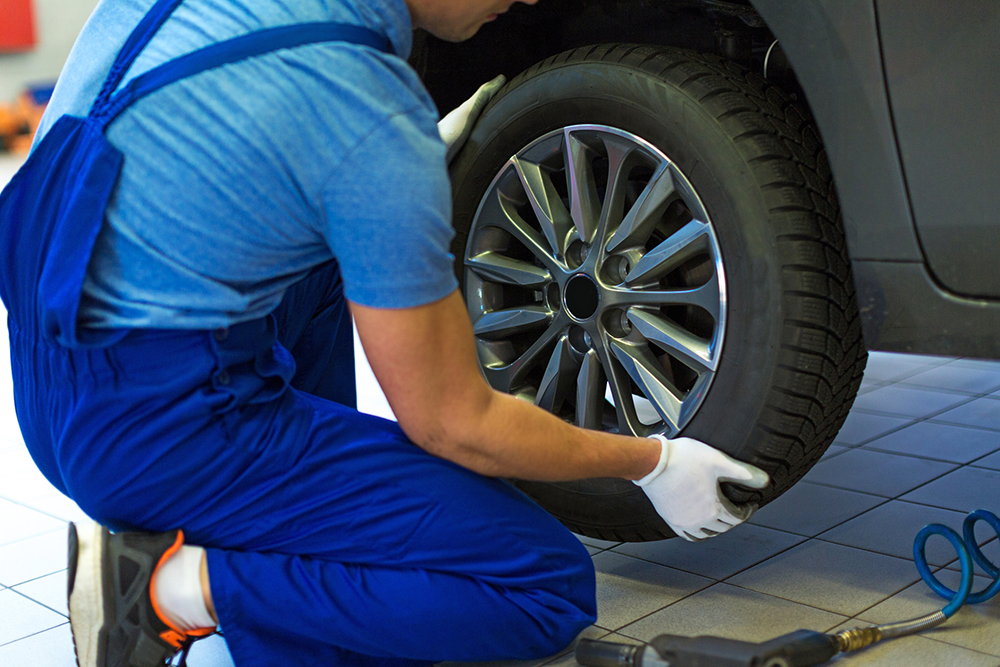
You probably logged a lot of miles this summer. Between family vacations, daily commuting and those spur-of-the-moment cruises at sunset, your tires could probably use a rotation.
Did you know the majority of turns we make are right-hand turns? This is another reason why it’s so important to routinely rotate your tires--to prevent them from becoming unevenly worn through overuse.
Tires are substantial investment, and routinely rotating those four rubber Os can help you get every last mile out of them.
But how often should your tires be rotated?
Industry specialists and automotive experts suggest every 5,000 to 8,000 miles.
This used to be thought of as something that should be done every other oil change, but improved automotive oils allow drivers to go 4,000 miles and more between oil changes these days.
In other words, consider rotating your tires during every oil change. This helps keep the treadwear even and maximize the mileage you get out of their lifespan.
Service centers and dealerships routinely offer a maintenance special that includes a tire rotation as part of an oil change and multipoint inspection.
By regularly changing a tire to another position on the vehicle, any abnormal wear patterns that were starting to develop could be corrected.
This prolongs the length of the tire’s life and proves itself a worthwhile investment in getting every last mile out of those inflatable rubber circles hauling us from point A to point B.
The U.S. Tire Manufacturer’s Association offers the following tips and insight about tire rotations:
- Tires should be rotated every 5,000 to 8,000 miles (or per the tire manufacturer’s recommendations) or at any sign of uneven wear.
- Vehicle manufacturers generally recommend replacing all tires at the same time. Replacing all four tires at the same time makes rotation even more vital for maintaining uniform tread depth and optimum tread wear.
- Some vehicles use different-sized tires mounted on the front and rear axles, or directional tires that can only roll in one direction. (Note: Directional tires are more often found on sports cars, rather than your average passenger vehicle.) Check the recommendations in the vehicle owner's manual or ask your service advisor for tips about proper rotation.
- Tire pressure should be adjusted for its new positions. Adjust tire pressure in accordance with the vehicle manufacturer's recommendations.
- If your vehicle has a matching full-size spare tire, include that tire in the rotation. Technicians should always check and adjust the inflation pressure of the full size spare when incorporating it into the rotation pattern.
- Check the tire tread and sidewall monthly. Look for uneven or irregular tread wear during a routine check of the tire’s air pressure.
Copyright © 2024 by Sensible Driver. All rights reserved.




















